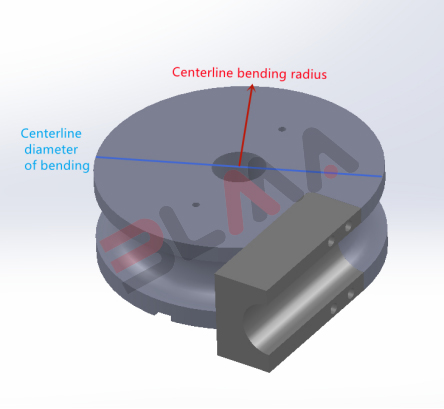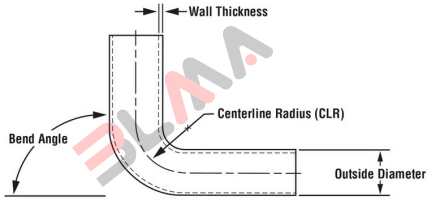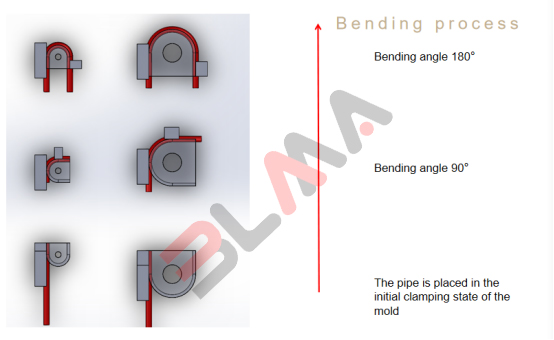Information About Tube Bending Radius
The bend radius is the measurement that the matrix applies to the tubular element to be bent. In the case of round tubes, it always refers to the mean radius, that is, referring to the center-line axis passing through the tube, while for square and rectangular tubular elements the reference is to the inner radius, passing through the inner bent portion of the tubular element. In this latter case, however, for the feasibility formulas the reference is always to the mean radius.
When referring to the radius of a die, we are referring to the center-line radius (CLR) that results from bending. CLR is the distance from the center of curvature to the center-line (axis) of the pipe.

Figure 1 Center-line bending radius
Factors affecting CLR
When choosing a die, factors that will affect the CLR you choose include the material type and grade to be bent, wall thickness, the OD, the application or design of the end product, and overall appearance required.
1.Achieved Center-line Radius (Achieved CLR):
Our dies have the CLR inscribed on it. Materials will spring or stretch open after it is bent, so that the CLR of a bent piece is slightly larger than the CLR listed on the die.
2.Calibrated Center-line Radius (Calibrated CLR):
When using Bend-Tech software, this value is used to specify the amount of tension and compression that will occur during each bending. This value is obtained using a calibration test, by bending a material specimen and measuring the obtained leg. Then, the software uses the tension/compression data to correctly calculate the amount of material at each bend and the correct bend position.
3.Outside Diameter (OD):
The outside diameter (OD) is the distance across the extreme outside dimensions of a tube or pipe.
4.Inside Diameter (ID):
The inside diameter (ID) is the longest distance across the inside dimensions of a tube or pipe.
5.Wall Thickness:
Wall thickness is the distance between the outside diameter and the inside diameter of the pipe. The relationship between outside diameter and wall thickness has an important bearing on selecting a die.

Figure 2 Pipe bending information
What are the effects of different bending radius
For example, using different bending radius for pipes of the same size will ultimately result in a very different formed product. So when choosing the right pipe bending die you must determine the bending radius according to your product drawings.

Figure 3 Same size with different bending radius




 English
English français
français русский
русский español
español português
português العربية
العربية Türkçe
Türkçe ไทย
ไทย Tiếng việt
Tiếng việt chinese
chinese




